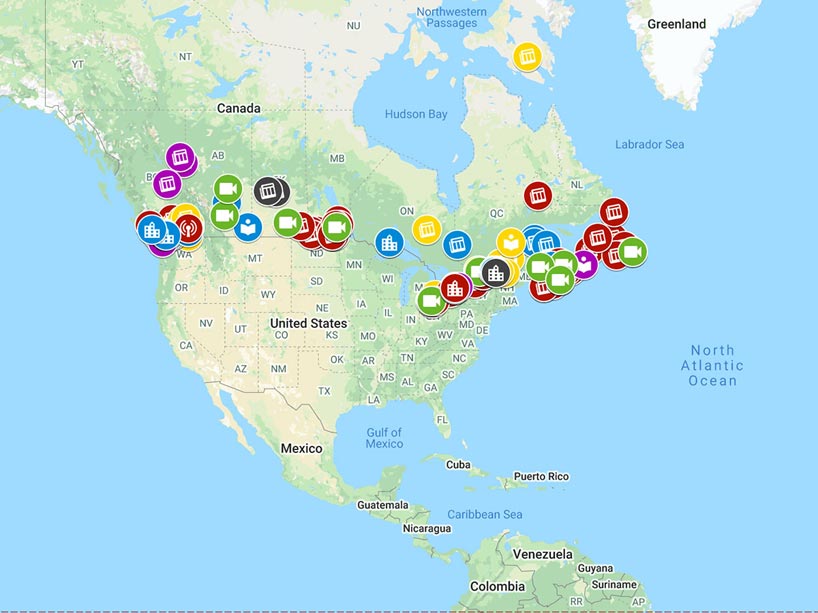Journalism professor April Lindgren researches impact of COVID-19 pandemic on local news sector

The interactive COVID-19 Media Impact Map for Canada (external link) tracks the pandemic’s impact on print, broadcast and online media across the country. Explore the map (external link) (works best in Firefox).
Critical research emerging from FCAD, the Faculty of Communication and Design at Ryerson University, spearheaded by Journalism Professor April Lindgren, tracks the impact of COVID-19 on media outlets in Canada since the World Health Organization declared a global pandemic.
Inspired by her work as a principal investigator for the Local News Research Project (external link) , Lindgren’s new research uses digital mapping to create an interactive tool (external link) that allows users to track the pandemic’s impact on print, broadcast, and online media across the country. From print reductions to closures, pay cuts and layoffs, the interactive map shows a real-time visual representation of COVID-19’s effect on an already vulnerable industry.
The project addresses the need for up-to-date data on what is happening to local news and highlights the importance of maintaining access to reliable, timely, independently produced local news.

Journalism professor April Lindgren’s research shows that more than 100 media companies in 11 provinces and territories announced cuts in the first six weeks of the pandemic. Photo credit: UNC.
“During this pandemic, people are turning to local news more than ever to find out what is happening at local hospitals, long-term care homes and in their communities in general. More generally, the absence of local news has an impact on elections, voter turnout, and people’s ability to intervene in policy and government decisions,” said Lindgren. “This tool is about tracking what is happening to the media outlets we rely upon to hold power accountable and provide citizens with a common base of knowledge about their community.”
The COVID-19 media impact map (external link) shows more than 100 media companies in 11 provinces and territories that announced cuts in the first six weeks of the pandemic. A total of 50 community newspapers have closed and more than 2,000 editorial and non-editorial workers have been laid off.
With the help of the Canadian Association of Journalists, the information fueling the map is crowd-sourced from across Canada, and further verified for accuracy by J-Source (external link) .
Data from the COVID-19 media map will be of use to news organizations, policymakers, and community members. Lindgren said she drew upon her experience in developing the Local News Map (external link) , a collaborative project with the University of British Columbia. Data from the Local News Map, which has been tracking changes to local news media since 2008, has been cited by scholars and journalists and used by federal officials to inform the development of policies designed to shore up local journalism. The Local News Map project has received funding from Ryerson and the Social Sciences and Humanities Research Council (SSHRC).
Informing the future of journalism
“We know from the Local News Map that since 2008, 307 local news organizations have closed in 214 different communities. We know from the COVID-19 media map that in the last two months, that process is accelerating,” said Lindgren.
Visit the Local News Research Project website (external link) to explore the findings.